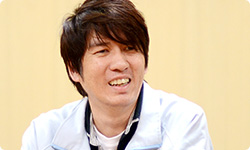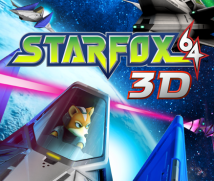4. Star Fox 2 that Almost Was
Now let’s talk about Star Fox 64.16 When the Nintendo 64 system came out, from your perspective, Miyamoto-san, the machine’s capabilities had increased, and the world entered the age of 3D polygons. What you had wanted to do with Star Fox on the Super Famicom system but hadn’t been able to do, you now felt like you could accomplish on the Nintendo 64 system, and you thought, “Alright, I should do this!” 16. Star Fox 64: A shooting game released for the Nintendo 64 system in 1997. It is the basis for Star Fox 64 3D. This game was released in Europe as Lylat Wars .
Exactly!
What did you set out to accomplish with Star Fox 64? That will lead us into the discussion of Star Fox 64 3D.
Our generation grew up with science fiction films, so there was a time when I thought I wanted to enter into science fiction films and run around doing stuff. My generation grew up with Star Trek17 on television and really got into science fiction with Star Wars. 17. Star Trek: A television series produced in America and broadcast in Japan in the latter half of the 1960s as Uchu Daisakusen. It was followed by a series of feature films.
That’s right.
I wanted a video game to have scenes like you see in those television programmes and films in which all sorts or objects are flying through space and a fighter craft dodges and weaves through them or a large fleet of starships is approaching you.
And you didn’t want to simply enjoy such science fiction scenes visually, but to enjoy them interactively.
That’s right. I thought, “Let’s make space fantasy that you can experience for yourself!” We wanted that experience in a video game. So after the original Star Fox came out, we tried a number of things, like strategic play, for Star Fox 2.
We experimented a lot for Star Fox 2.

We did. We had quite a script for Star Fox 2 and had it running, with robots morphing and running, and attempted an all-range mode in which you could fly a full 360 degrees.
Er…what’s Star Fox 2?
Sorry? You don’t know about Star Fox 2?
No, it’s the first I’ve ever heard of it!
What?! No one told you about it?! It’s the Star Fox game that almost was!
It never got released.
Oh…
We expanded the Super FX chip’s memory to make something called Super FX Chip 2.
It had twice the memory.
Which sped up processing.
And that idea became…
That became the basis for Star Fox 64. For Star Fox 2, we had really pushed the boundaries, by having the Arwing fly around a full 360 degrees, flying to one extreme and then back again, for example .
Yes.
Having a tank appear was another idea from Star Fox 2.
Right. The tank flies—whoosh!—into a base and then transforms into a robot or something.
That robot was cool.
It was that cool and you even made a new chip, so why did Star Fox 2 never go out into the world?
It’s something that often happens. The release got set back about a year or so, and a half a year later, the Nintendo 64 system was due to come out, so we thought, “Is it too late to ask people to shell out for this?”
And it had taken time to develop Super FX Chip 2.
That’s right. And other companies’ game consoles were using polygons all over the place, so we didn’t think we could catch up even if we stuck this expensive chip in the cartridge, so we rethought it.
Oh, I see.
Relatively speaking, that was good, though.
Was the reason you decided to bring out Star Fox 2, which never went on sale, in a new form for the Nintendo 64 system that you were certain you could make it for that system?
Yes. By combining the all-range mode and scrolling, the structure of the game was fairly established, so we wanted to use that structure from Star Fox 2 to make scenes with a stronger sci-fi bent, and we wanted to make the Arwing feel more comfortable to fly, so (Kazuaki) Morita-san18 at SRD did some programming experiments with the Nintendo 64 system. When I saw those, I thought, “Ah, now we can make it like a science fiction film!” 18. Mr. Kazuaki Morita: Board member and Kyoto branch manager, SRD Co., Ltd. As a programmer, he has participated in development of numerous titles, including games in The Legend of Zelda and Super Mario Bros. series.
So, you were able to tell during the experimental stage that you could make it.
Yes. It started shaping up in a number of ways as soon as we first began developing Star Fox 64, like with it being a shooting game even as various characters show up and you talk with them in an unfolding drama, and also how you have teammates, and if one of them gets beaten by an opponent and drops out, it syncs perfectly with the game.
Takano-san, when were you called to the team?
Development was already underway. Imamura-san said, “We’re short on scriptwriters, so I want you to help.” I had an impression of Star Fox as fun because of the Super Famicom version, so I immediately replied, “Of course I’ll do it!” He sort of fooled me, though. (laughs)

I suppose you thought, “It wasn’t supposed to be like this!” (laughs)
Yes. I ended up having a rough time. A lot of it was new to me and everything was trial and error. And Nintendo’s products rarely start with a story.
Gameplay always comes first. I imagine you had trouble with that when you worked on The Legend of Zelda too.
Yes, I did. (laughs)
But we can’t write the scripts based on what’s convenient for the scriptwriters.
That’s definitely true.
Gameplay comes first.
Besides, if you wrote the story first, it would be boring. So I don’t just write some dialogue and say, “Use this.” Instead, I wait until the game has come together somewhat and include some hints.
You think about which words will function best in the game.
Sometimes it’s just an explanation of the controls.
That’s right. So in a place where you get attacked from behind by the enemy, I make someone say something like, “Use the brake (Bottom C Button)!” (laughs)
That really is an explanation of the controls!
Yeah! After that, I worked on a script for The Legend of Zelda. I think I learned everything working on Star Fox 64!
